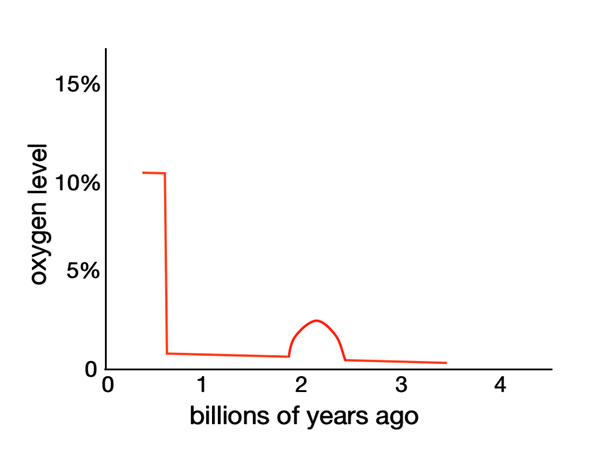Earth’s Fluctuating Oxygen Levels Support Biblical Creation
I like climbing mountains. During my Caltech days, a fellow astronomer and I had a 36-hour window between research projects. We quickly packed his car, drove seven hours to a trailhead, hiked several miles to the base of Bear Creek Spire, set up camp, proceeded to summit the Spire (elevation 13,713 feet), downclimbed to our camp, ate the biggest meal of our lives, slept overnight in our tent, and drove back to Caltech early the next morning.
During our brief trip, we saw some of the most stunning and beautiful vistas we had ever experienced. However, we paid dearly for the rapidity of our ascent and for the massive meal we ate. We failed to consider the impact (headaches, rapid pulse, faintness) of such rapid changes in oxygen levels to our brains.
Recently, a team of thirteen geophysicists demonstrated that varying oxygen levels in Earth’s atmosphere and oceans provide yet one more reason why animals appear so late in Earth’s history. The team discovered that Earth’s atmospheric and oceanic oxygen levels declined substantially after an initial rise. This find challenges the long-held orthodoxy that Earth’s atmosphere-ocean system experienced progressively more oxidizing conditions throughout time.1
In their paper the team first explained how quantities and ratios of certain uranium and thorium oxides provide a faithful record of changing redox (reduction and oxidation) conditions on Earth. Then they referenced measurements of uranium and thorium oxides in the shale (unaltered rock) record over the past 3.4 billion years to determine the oxygenation history of Earth’s atmosphere and oceans.
The geophysicists showed that oxygen levels remained at very low levels until about 2.4 billion years ago. The levels rose for the next 250 million years, attaining an atmospheric oxygen level of nearly two percent, then gradually declined over the subsequent 250 million years to a low level, but not quite as low as those previous to 2.4 billion years. For the most part, oxygen levels remained at those low amounts until about 600 million years ago. Then, oxygen levels rapidly and dramatically rose and remained high from that time onward (see figure below).
Figure: Oxygenation of Earth’s Atmosphere and Oceans as Indicated by U-Shales
Though not discussed in their paper, the team’s findings buttress the case for the supernatural creation of life and for the accuracy of biblical creation texts. Their discovery shows that insufficient oxygen existed for animal life until after 600 million years ago. At that time two “explosions” of animal life occurred. The fossil record establishes that the Avalon explosion of jellyfish and sponges occurred 575 million years ago, followed by the Cambrian explosion of virtually every conceivable complex animal body plan at 543 million years ago. Both explosions came about without any evolutionary history or delay. The timing and form of both are consistent with the fifth day creation miracles described in Genesis 1: 20–23: “Let the water teem with living creatures.”
Endnotes
- C. A. Partin et al., “Large-Scale Fluctuations in Precambrian Atmospheric and Oceanic Oxygen Levels from the Record of U in Shales,” Earth and Planetary Science Letters 369–70 (May 2013): 284–93.







